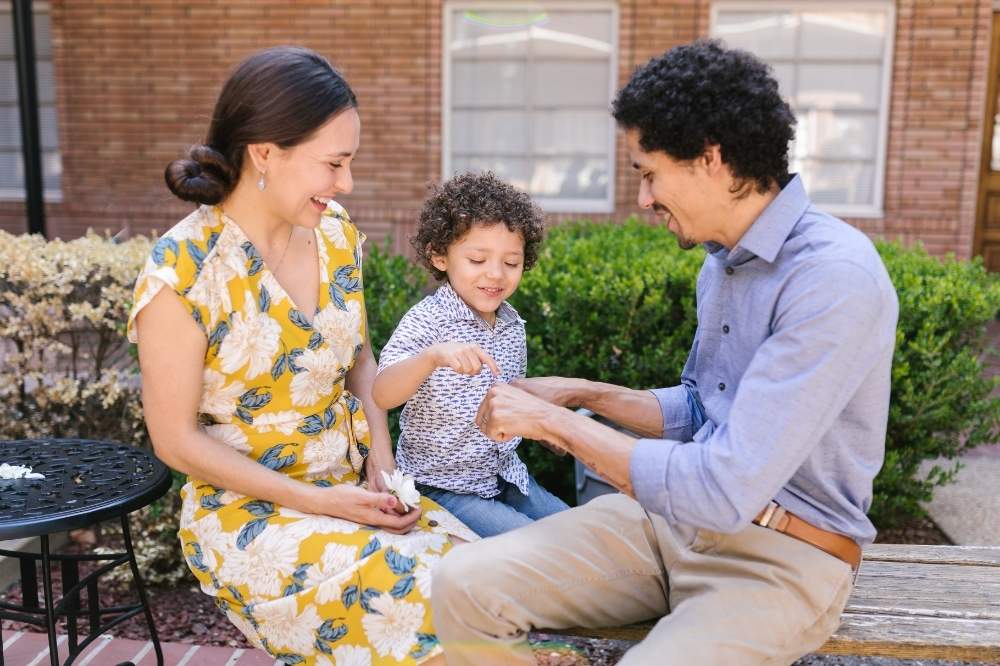Getting children to consider their aspirations and goals ahead can be like treading a thin wire. Inspiration is needed but in moderation so as to avoid overawing. Support is required but in a non-prescriptive manner. Discussions on aspirations and goals instill in children a sense of purpose, but these need to be light, easy to change course if needed, and built on curiosity and not coercion. Children perceive the world as having huge amounts of possibilities and walking them through this attitude instills resilience, aspiration, and self-discovery.
The Value of Early Conversations
As young children, the idea of a “goal” might be abstract. However, at a young age, children are already grasping concepts such as trying towards something, having a milestone to reach, or envisioning what they would like to do in the long run. By breaking it down and beginning in an easy manner to relate to their parents, goals are presented in tangible ways. As easy as riding a bike, putting a puzzle together, or finishing a school assignment allows children to understand the relationship between effort and accomplishment.
As children age, goal discussions can become broader. Discourse about bigger goals such as acquiring a new skill or enhancing a hobby paves the way to greater ambitions in the future. It is essential to make these discussions ordinary so that it comes naturally and is never an imposition.
Listening Before Advising
Few parents hasten to offer advice when children speak of aspirations for the future, but listening is paramount. Children long to be heard and their notions—sensible or prohibitive—merit respect. A young person declaring an ambition to be an astronaut or a dancer is hardly mapping a life’s course but is stating an aspiration to be considered.
Open-ended questioning prompts children to remember to share in greater detail: “What are you excited about about that?” or “How would it make you feel?” These responses give parents a glimpse into their child’s motivation and encourage critical thinking in children about their ideas. When children feel relaxed sharing their ideas, their decision-making is likely to become confident.
Connecting the Dreams to Real Life
While it is important to stimulate creativity, it is just as important to incorporate those desires into everyday life. If a child has a dream to be a teacher, holding a mock class with stuffed animals will give them a small taste of it. If another has a dream to be an artist, parents will often provide simple materials and space to create.
These small steps uphold the idea that goals are within grasp and not distant or unattainable—belong to the present and now. As time progresses, kids come to realize their path to their bigger goals is made up of consistent small steps.
Encouraging Practical Thinking
Dreams will be inspiring, but opportunities to teach planning and taking responsibility are available. Introduce subtle concepts about saving money, committing time, and honing skills in order to meet goals. With older children, lectures on how one plans to begin careers or how families make important decisions become a part of daily life.
Discussing topics like education, career, and even valuation of real estate in discussing how one prepares for security allows children to have a greater sense of how adult life is determined. This knowledge makes planning ahead less stigmatized and within closer grasp.
Balancing Between Direction and Freedom
Each child’s trajectory will be unique, and it is best to avoid rigid expectations. The ideal method is to intersperse guidance and freedom while allowing exploration and establishing real-world context. Parents may share their experiences of establishing goals and realizing them or turning in an entirely different direction. This illustrates for the children that goals are dynamic and may change as a person develops.
The focus should be on growth and not on getting it perfect. The child may give up one dream to try another, and this is not failure but an indication of inquisitiveness and changeableness.
Training Resilience Through Adversities
Not all of their dreams will come so easily, and part of the life lesson is coping with failure. Teaching children to face challenges with support and encouragement fosters resilience. For instance, if they’re having trouble with a sport, parents might emphasize effort over results: “I saw how much you practiced even when it wasn’t easy.” This solidifies the message that effort is worth it even if the immediate payoff is nil.
Kids who become adept at viewing bars as doors and not walls are likely to bring this attitude into life. It allows them to aim high in life and never be frightened by mistakes.
Integration of Dreams into Everyday Experience
Goal-setting discussions needn’t occur in formal situations. Daily life provides moments to explore aspirations for the future. Discussions over the dinner table, walks to school, or bedtime stories may incorporate subtle prompts to encourage the imagination of a child. Stories specifically bring children into contact with characters whose aspirations are great, whose challenges are great, and whose perseverance is great. These stories enable children to consider themselves to be within an even greater story of aspiration and growth.
By incorporating these discussions into daily life, parents make it easy to introduce discussions of goals and not to make them special events. Children come to expect it to be normal to think about what they want and to see the steps it will take to achieve it.
Connecting Goals to Responsibility
As kids get older, relating goals to-responsibility is even more vital. Discussions about doing chores, saving money or doing schoolwork can be related to bigger life lessons. Letting kids know how hard work today is preparation for tomorrow’s goals instills in them the idea that aspirations are not developed in a vacuum.
For older children, money management can even be incorporated into these dialogues. Discussions of how households balance budgets, saving up money for large purchases or paying home loan faster by an unusual amount instill ideas in balance with long-term planning and individual responsibility. Children do not need to know all the specifics but are well-served to grasp adult goals are reached through persistence and discipline.
Nurturing Self-Belief

The most powerful tool for helping kids pursue their dreams is self-belief. Encouragement, recognition of effort, and genuine interest in their ideas all fuel confidence. Kids who feel supported are more likely to take risks, explore opportunities, and adapt when things don’t go as planned.
Their parents can demonstrate this self-confidence by exhibiting optimism in their own endeavors. When kids witness adults working towards their own goals, even humble ones, it routinizes the process of developing aspirations and undergoing effort to achieve them.
Keeping the Conversation Open
Aspirations and goals are redefined over time as children become older. A five-year-old’s dream may be completely dissimilar to a teenager’s and it is perfectly normal. The key is keeping the door slightly ajar and maintaining an open conversation. The child must be comfortable to express their new passions and never be dismissed or ridiculed.
By positioning goals as an emergent conversation instead of a preordained plan, parents release young people to explore, to expand, and to re-plot their trajectory. Open-ended conversation in turn fosters trust, resilience, and a lifetime of exploration into what is possible.
Conclusion
Discussions with children about goals and aspirations are less about providing a definitive guide to their futures. It is about encouraging their exploration of their passions, comprehension of the worth of perseverance, and fortification to tolerate change. Through listening, directing, and implementing these discussions into their daily lives, parents may raise children to aim big but be humble in practical comprehension.
Dreams are the seeds of tomorrow and if kids are instilled to plant and grow them then these become individuals appreciative of exploration, hard work and possibilities to come.

